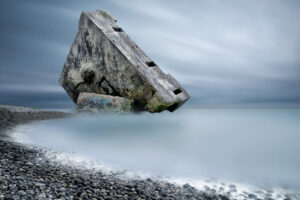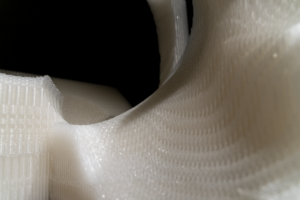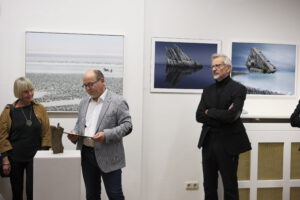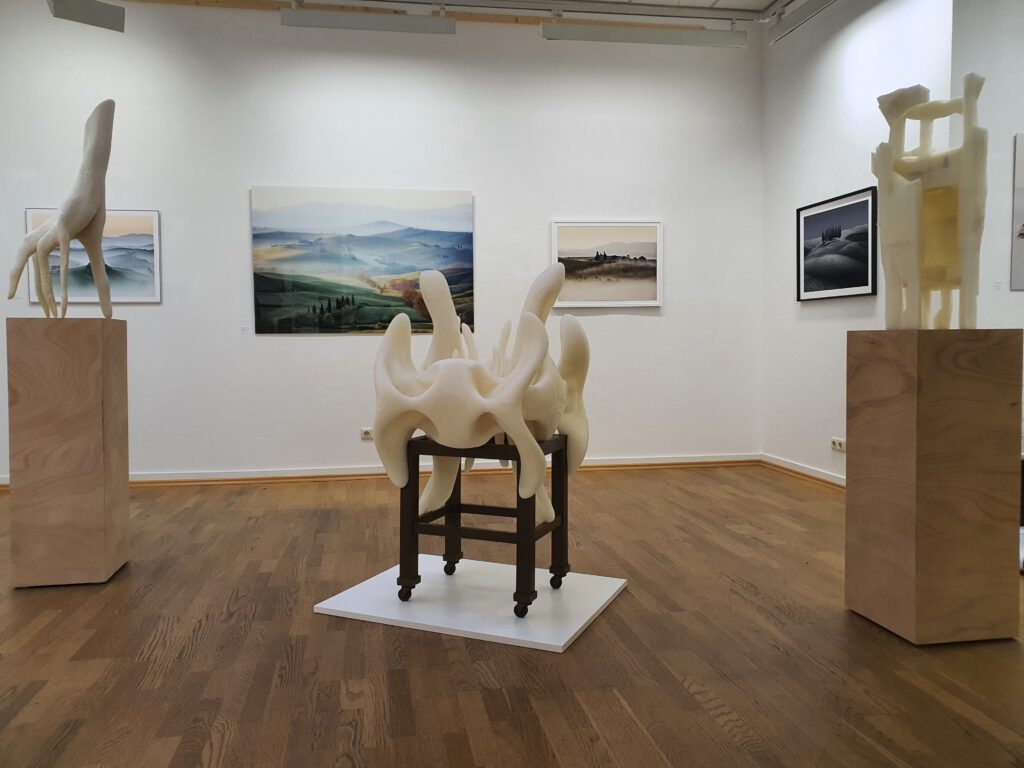formen.schichten.farben
Echoes of Boundaries
Photography and Sculpture
Werner Richner (Germany) & Pit Molling (Luxembourg)


Werner Richner Martial Sea Marker Pit Molling, Adaptive Cloud [detail]
Opening – Tuesday 24 September, 6pm – 9pm
Short film -- walk through the exhibitiong
&
Reportage im französischen Fernsehen
Rezension in the Saarbrücker Zeitung
Gallery Puzić feierte am 24. September die festliche Eröffnung der Herbstsaison 2024 mit zwei herausragenden Künstlern aus dem Saarland und unserem Nachbarland Luxemburg. Auf der einen Seite die transzendenten Meisterwerke des renommierten Fotografen Werner Richner, sowie auf der anderer Seite die hypermodernen, ungewöhnlichen Plastiken des luxemburgischen Bildhauers Pit Molling.
The provocative constellation of this exhibition - Echoes of Boundaries - is about approaches of a special kind: natural landscape photographs meet sculptures created using artificial 3D printing. Natural and artificial approaches, however, are hardly separable in colors of time and form-binding, because there are astonishing parallels and connections. Time seems to freeze in the space of layers and counter-light (Gegenlicht). Designs frighten us a little. Is this an image, or a purely uncertain, invisible allegory, composed of different visibilities und indefinable materiality? How does lactic acid become a sculptural material? «Echos der Angrenzung» The provocative constellation of this exhibition - Echoes of Boundaries - is about approaches of a special kind: natural landscape photographs meet sculptures created using artificial 3D printing. Natural and artificial approaches, however, are hardly separable in colors of time and form-binding, because there are astonishing parallels and connections. Time seems to freeze in the space of layers and counter-light (Gegenlicht). Designs frighten us a little. Is this an image, or a purely uncertain, invisible allegory, composed of different visibilities und indefinable materialityy? How does lactic acid become a sculptural material?
Echoes could also be deciphered with regards to the two artists and their inherent differences in their understanding of “nature” and its content.
 .
. .
.
Werner Richner’s daunting and disturbing “Atlantic Wall” bunker pictures, his filigree salt bodies and dunes, or his romantically vibrating groups of trees floating in the backlight and “sky mirror” landscapes stand in an explosive relationship to the improbable textures of Pit Molling’s polylactic acid sculptures, fragmented, assembled and put together, layer by layer, like a slowly emerging “meantime design” house or scaffolding, somewhere in South Africa or Cuba. How does he stabilize the white, foam-like material that swells and pushes forward?
Questions will have to be answered. Come and help us to question the strangely gothic motifs of these two artists and to reorient ourselves to the possible abysses, perhaps also magical moments, between heaven and earth.
Ein kleiner weiterer Höhepunkt ist die Ankunft (9. Oktober) der neuesten Skulptur Pit Mollings, die in langwieriger komplexer Entstehung nun endlich fertig vor uns in Erscheinung tritt, mit dem Titel „Up the Rabbit Hole“ (Bildmitte).

photos von der vernissage (c) Gerhard Schaal © gerhard schaal[Für die Werklisten und Preise der Ausstellungswerke von Werner Richner und Pit Molling, bitte die Galerie kontaktieren]